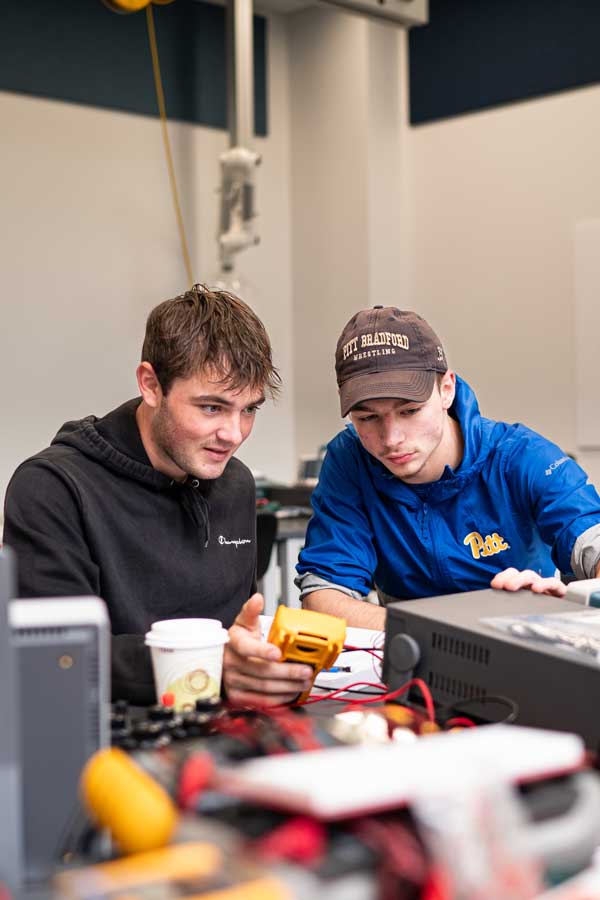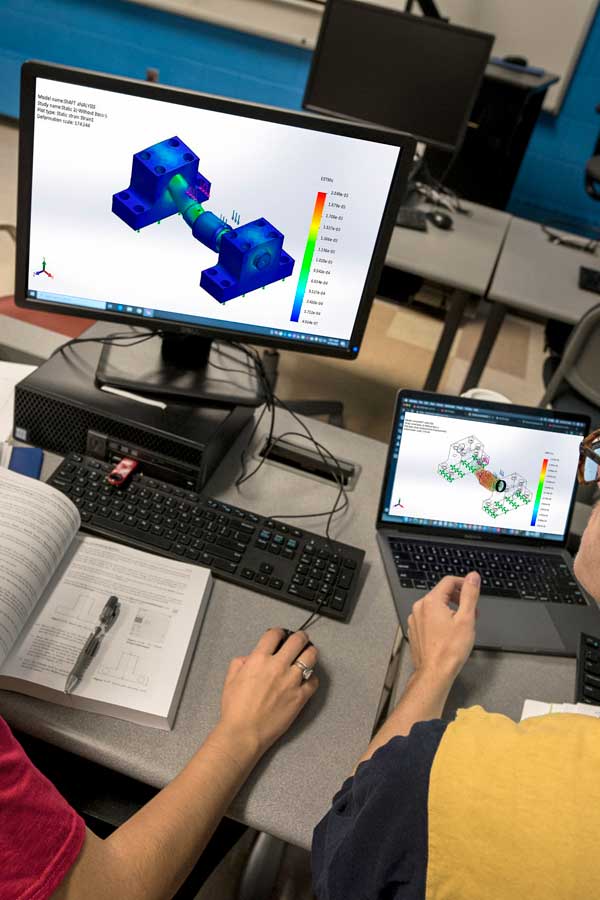
Engineering Science - AS
IntroductionIf you’re interested in being an engineer or learning more about engineering but want more options, our two-year program in engineering science will get you started on the road to becoming an engineer. And you'll get options.
WHY STUDY ENGINEERING SCIENCE?
Once you complete the two-year program, you’ll have some options. You can relocate to the School of Engineering at the University of Pittsburgh and complete a four-year degree in engineering
Relocate to another engineering school and finish a four-year engineering degree
Continue your studies on our campus and get a bachelor's degree in another program
Apply what you’ve learned and get a job
Use your two-year degree to enhance and advance your career if you already have a job.
WHAT WILL I LEARN?
You'll take engineering courses. You'll also take courses in chemistry, calculus, physics and English composition.

WHAT CAN I DO WITH A DEGREE IN ENGINEERING SCIENCE?
When you graduate, you’ll be prepared for a career in many areas.
Employers:
- Corporations
- Industry
- Design firms
- Government
- Research firms
- Manufacturing firms
- Colleges of universities
-
ENGR 0131
Statics For Civil & Envrl EngineeringA basic course in statics. Utilizing the free-body diagram, the course covers forces and equilibria of particles, rigid bodies, surfaces, trusses, beams, cables, and other basic structural elements. Use is made of computers for problem solving. -
ECE 0031
Linear Circuits And Systems 1The analysis of linear circuits. Electric variables and circuit elements; Kirchhoff's and Ohm's Law; Mesh and Node Equations; Thevenin and Norton equivalent circuits; first and second-order circuits; time domain analysis. -
ENGR 0135
Statics & Mechc Of Materials 1First of a two course sequence covering statics and strength of materials. Topics covered include: concurrent force systems, equilibrium, axial loading, stress, strain, deformation, moments, equivalent systems, centroids, centers of mass, and distributed loads, free-body diagrams, equilibrium of rigid and deformable bodies, plane trusses, frames and machines, equilibrium in 3D, torsion and friction. Use is made of computers for problem solving. -
ENGR 0015
Introduction To Engineering AnalysisIntroduces students to basic topics in engineering, the role of the computer in engineering, ill-structured problem-solving and report writing. The course includes material on the use of UNIX, HTML, spread sheets, and MATLAB. Data analysis and curve fitting is done in both MATLAB and Excel. The writing component includes four detailed reports and includes an oral presentation. The course goals are: to introduce the fundamentals of what engineering is, what engineers do, why a diverse work force is needed and what values come with working in a group environment; to introduce the required library research skills and communication skills used by all engineers; to introduce the role of the computer in engineering problem solving , including the basic analytical, programming design, graphical, and problem solving skills used by most engineers in their profession; and to provide an overview of how material in the basic sciences and mathematics is applied by engineers to solve practical problems of interest to society.